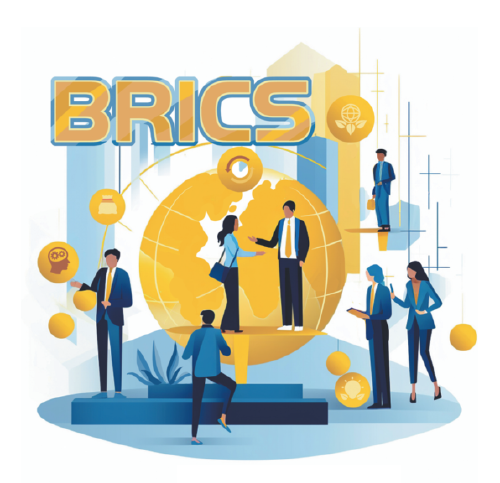Published: September 02,2023
By Hisham AbuBakr Metwally Mohamed

MA XUEJING/CHINA DAILY
With the inclusion of Argentina, Egypt, Ethiopia, Iran, Saudi Arabia and the United Arab Emirates at its just concluded summit in Johannesburg, BRICS has become an 11-member grouping, though the six countries will become full members on Jan 1, 2024.
What led BRICS to choose these countries, not others, as new members given that 23 countries had formally applied to join the grouping?
In order to understand the main reasons behind accepting the six countries’ application for membership, we have to understand the important goals of BRICS. “BRIC” was established in 2006 with Brazil, Russia, India and China as the four members. It became “BRICS” in 2010 with the inclusion of South Africa (though it participated in a BRICS Summit as a full member in 2011). The aim of BRICS has always been to promote trade and investment cooperation among its member states. In line with its development policy, BRICS established the New Development Bank in 2014 which has already funded a number of projects worth $30 billion.
The world has witnessed major political changes over the past few years. Many countries, especially developing and emerging market economies, have been trying to change the existing unipolar world order and reduce the control of rich countries over global financial institutions.
The world has seen the devastating effects of the trade war previous US president Donald Trump launched against other countries, particularly China, on developing economies as well as the global economy. Incumbent US President Joe Biden, instead of abandoning Trump’s policies, has continued to use them to target China. In fact, the United States uses the dollar as a weapon against Russia, and imposed unilateral sanctions on that country, and has rallied its allies to follow in its footsteps. To be sure, the US-led Western control over international financial institutions such as the International Monetary Fund and the World Bank has harmed developing economies.
This US-centric system is no longer acceptable to the emerging market and developing economies. With developing countries as its representative, the Global South now wants to hold dialogue with developed economies to help build a multipolar world that is marked by equality and respect for the rules, and to restructure the global financial system.
According to World Bank data, the six new member states will add $3.24 trillion to the BRICS economies. As an indicator of the economic might of the grouping, the BRICS countries, even before the inclusion of the six new members, accounted for a larger share of global GDP (in purchasing power parity terms) than the G7 countries. To be precise currently BRICS accounts for 31.5 percent of the global GDP (PPP) while the G7 accounts for 30.7 percent. Plus, the BRICS countries are home to 3.2 billion people while the G7 countries have a population of just 800 million.
The question, “why were the six countries included in BRICS”, was partly answered by Russian Foreign Minister Sergei Lavrov when he said at the Johannesburg summit that the criteria included the weight and prestige of the new members and their political stances on global issues, because all existing BRICS members agree the grouping should be expanded with the inclusion of countries with the same ideas.
As President Xi Jinping said, the expansion of BRICS will inject new impetus into the grouping’s cooperation mechanism and reflects its determination to promote unity and cooperation.
Commenting on so many countries submitting applications to join BRICS, Brazilian President Luiz Inacio Lula da Silva said that their interest shows the developing world wants to establish a new global economic order that is fair, just, equitable and truly representational.
Other key factors, such as a diversified and strong economy, relatively developed infrastructure and strong local financial institutions, also played a role in the inclusion of the six countries in BRICS. But the fact that they are spread over three continents, too, was a key factor.
Saudi Arabia is the largest oil producer in the world and the largest Gulf economy, while the UAE is among the world’s 10 largest oil producers and a global trade and aviation hub, and Iran is the fifth-largest oil producer in OPEC in 2021 and the third-largest gas producer in the world in 2020. Egypt is strategically important as it links Asia with Europe through the Suez Canal and is the second-largest economy in Africa, and Ethiopia is home to the headquarters of both the African Union and the United Nations Economic Commission for Africa. As for Argentina, it is the second-largest country and economy in South America.
The world is changing rapidly and the establishment of a multipolar world is no longer just a dream. With its expansion, BRICS is on the way to making it a reality.
The author is first economist researcher at the Egyptian Ministry of Foreign Trade and Industry. The views don’t necessarily reflect those of China Daily.
China Daily
 Africa -China Review Africa -China Cooperation and Transformation
Africa -China Review Africa -China Cooperation and Transformation
